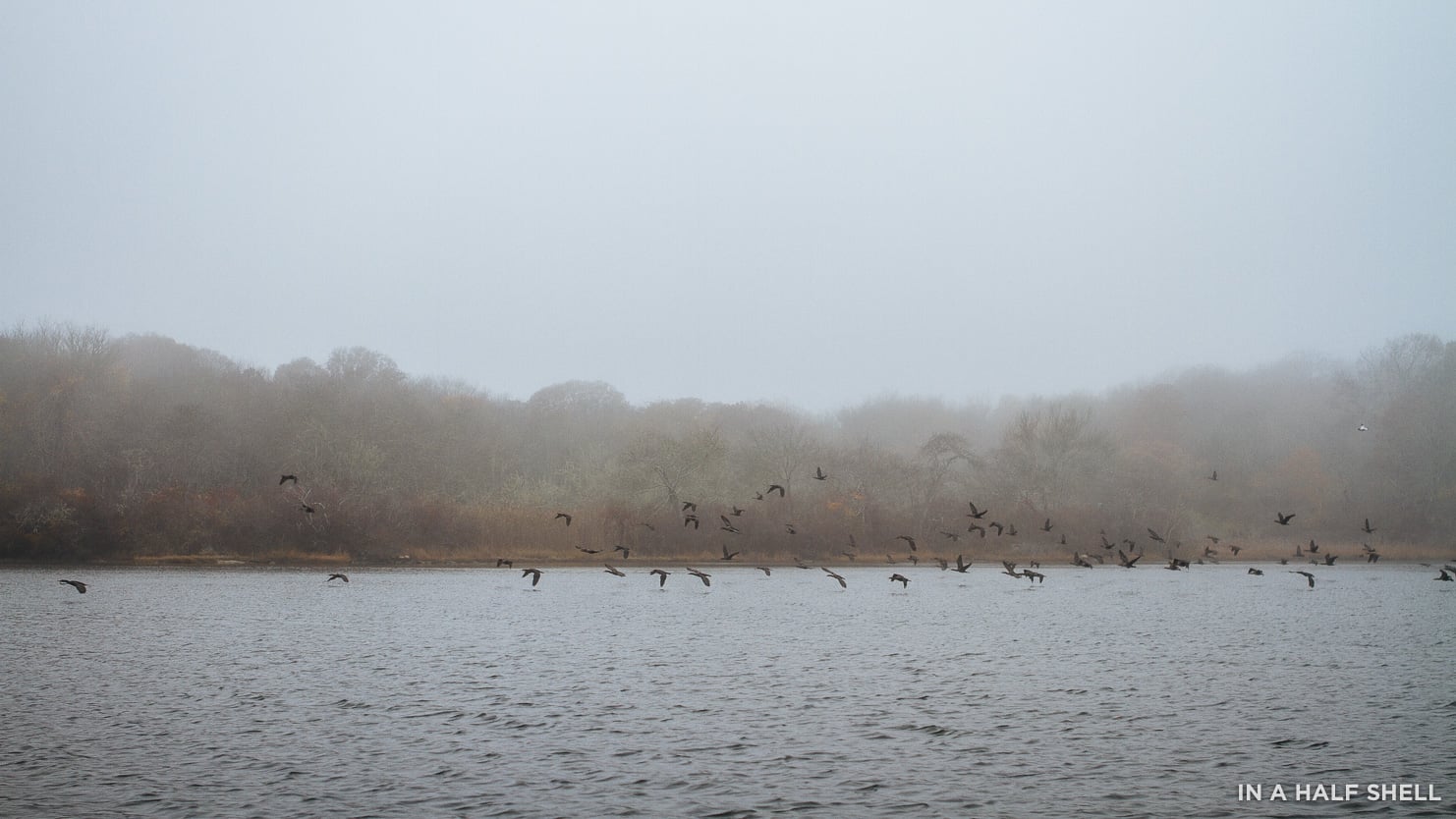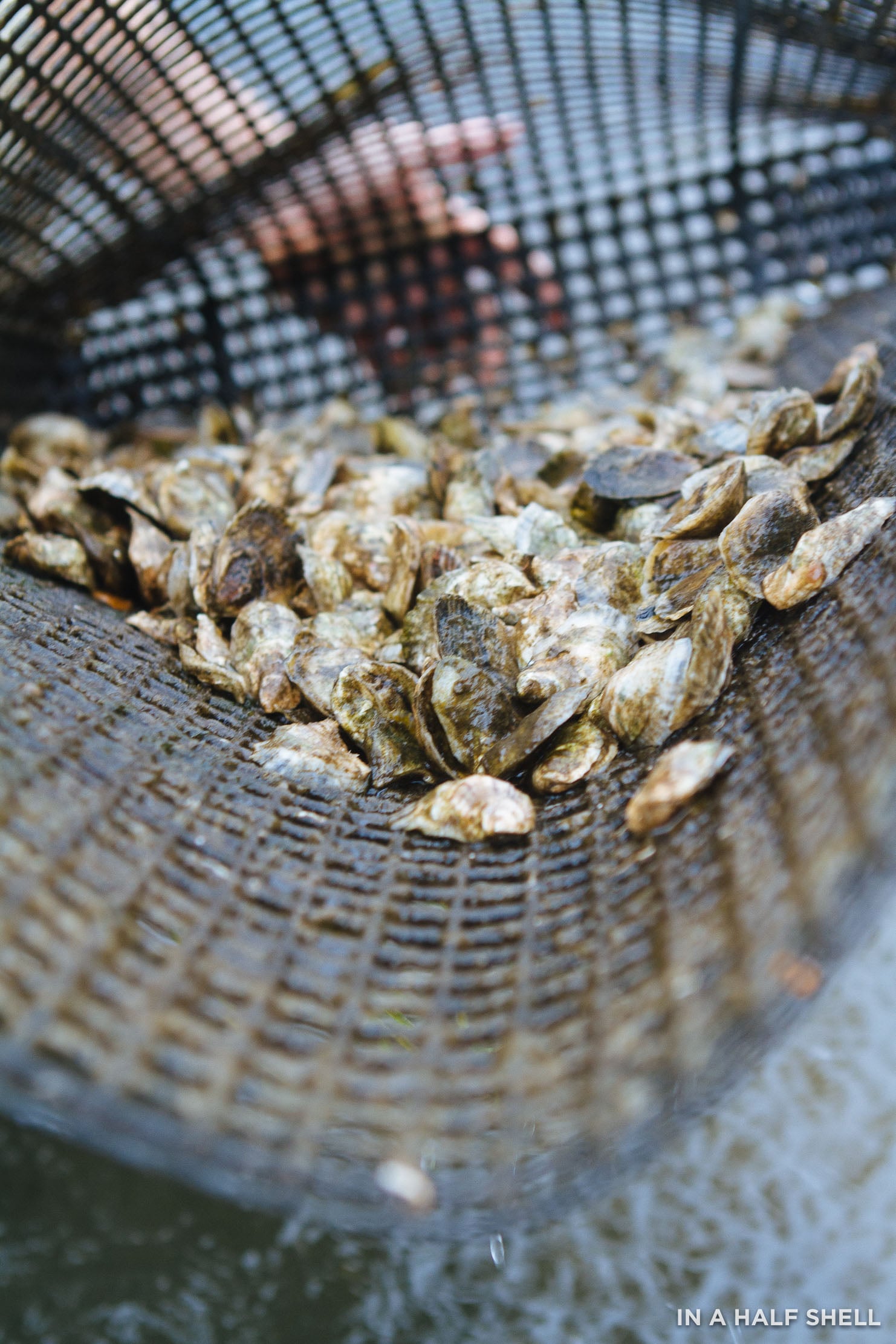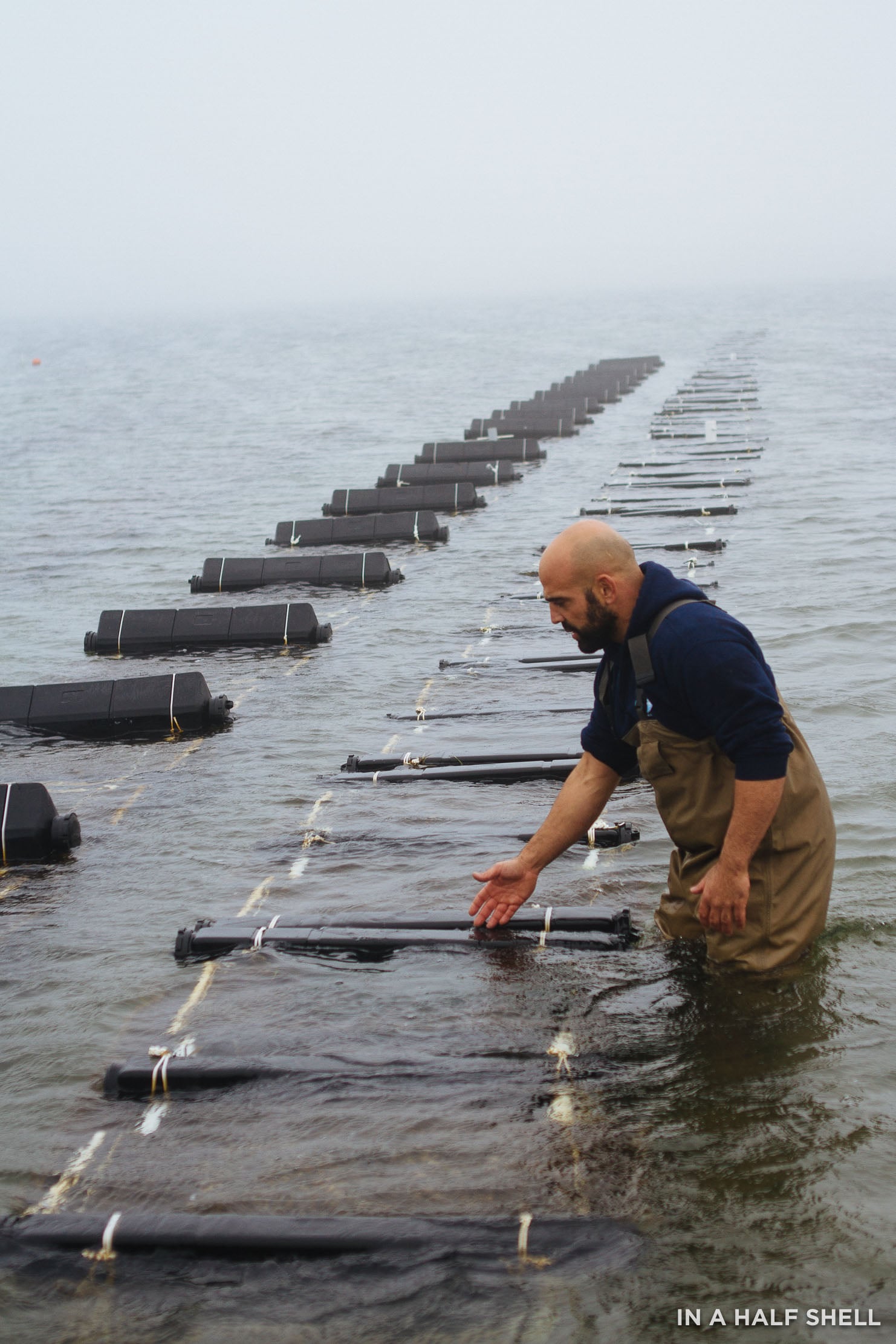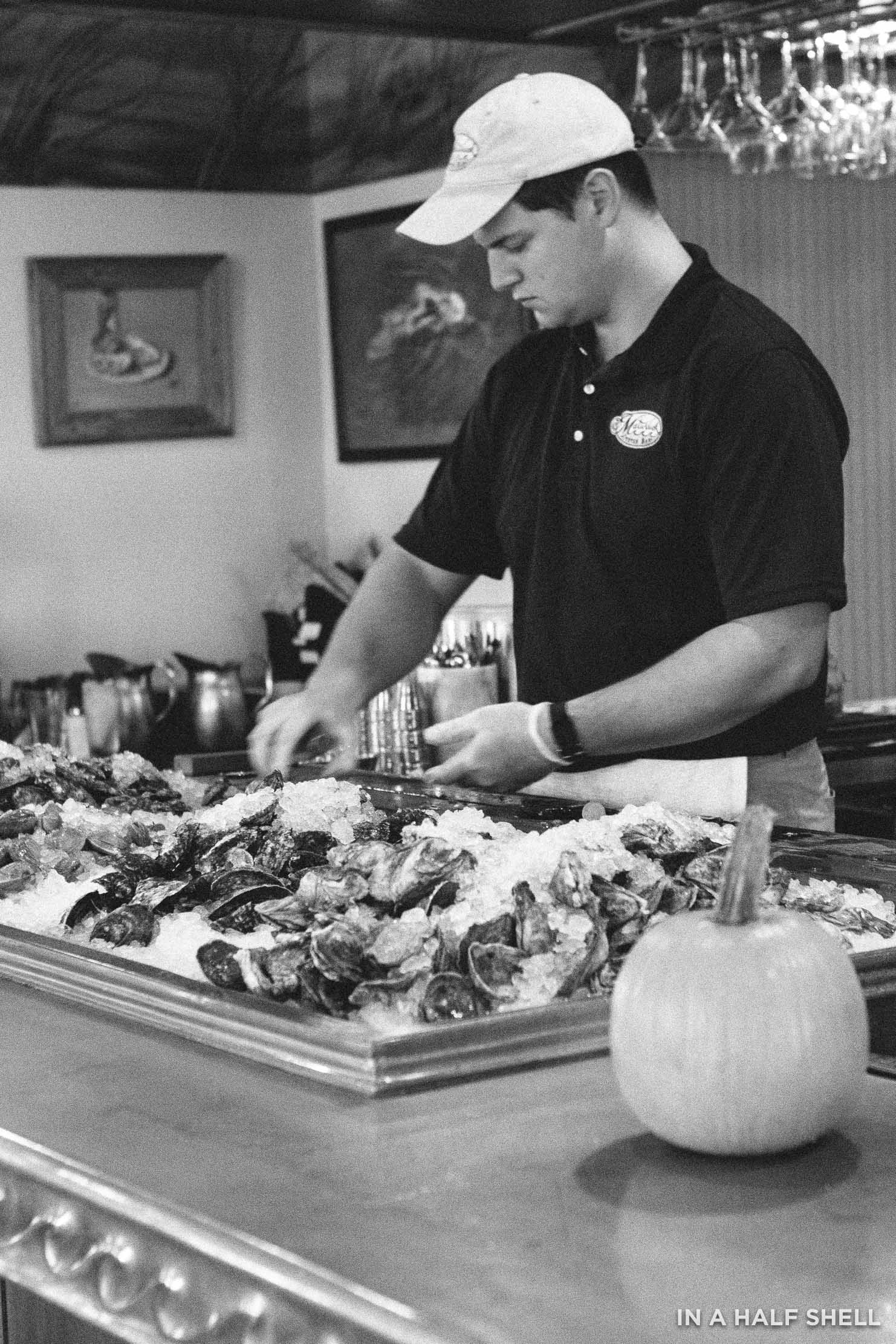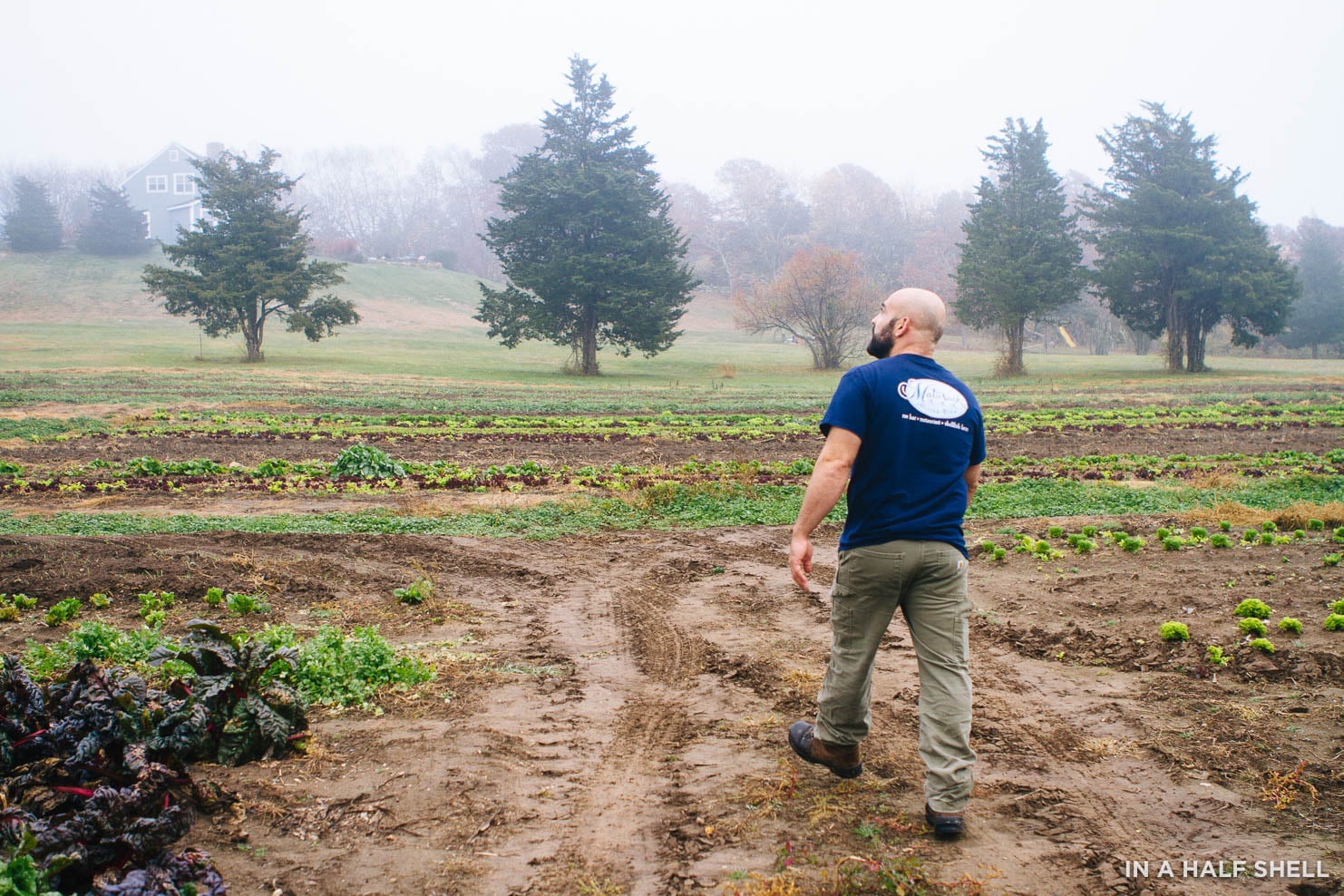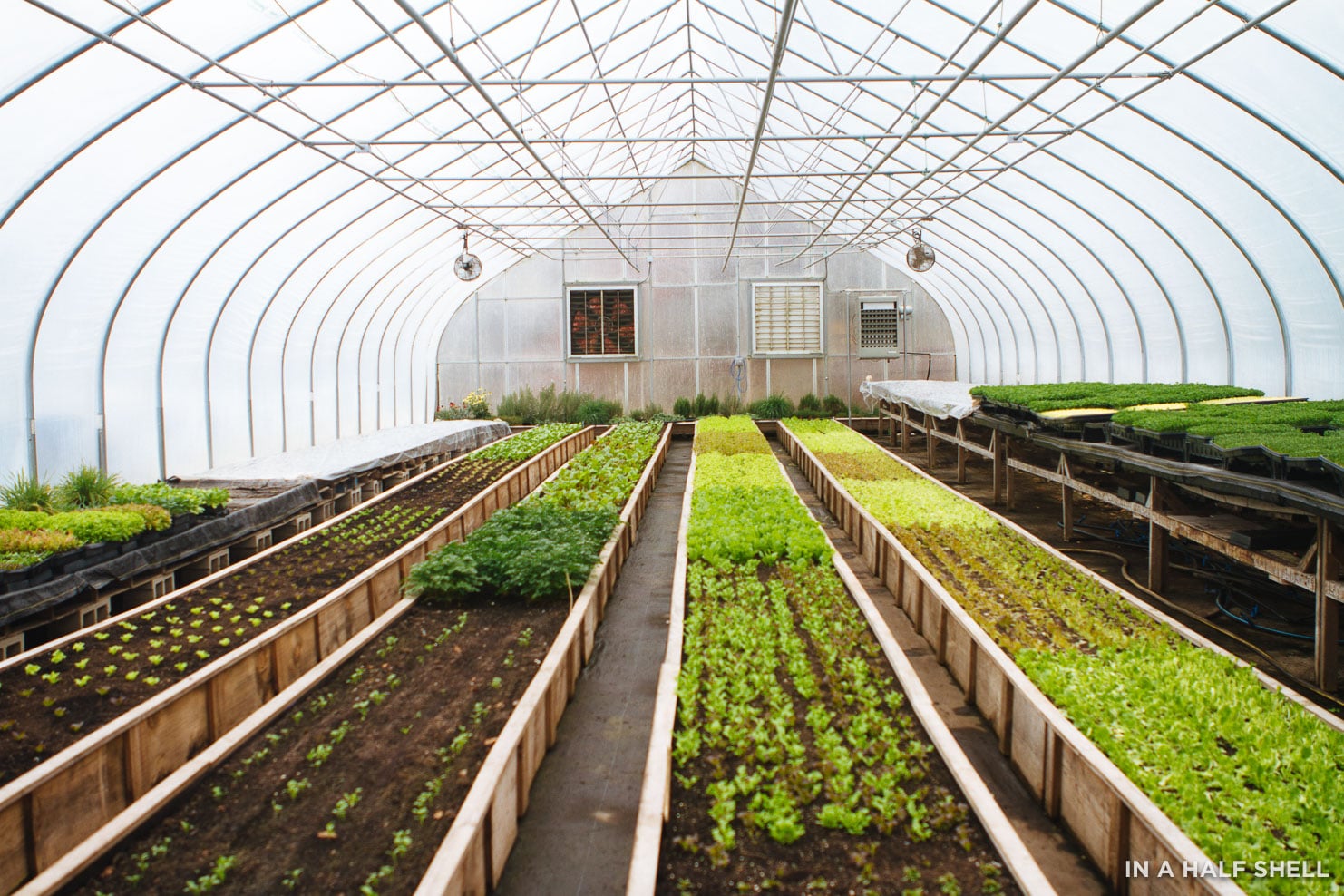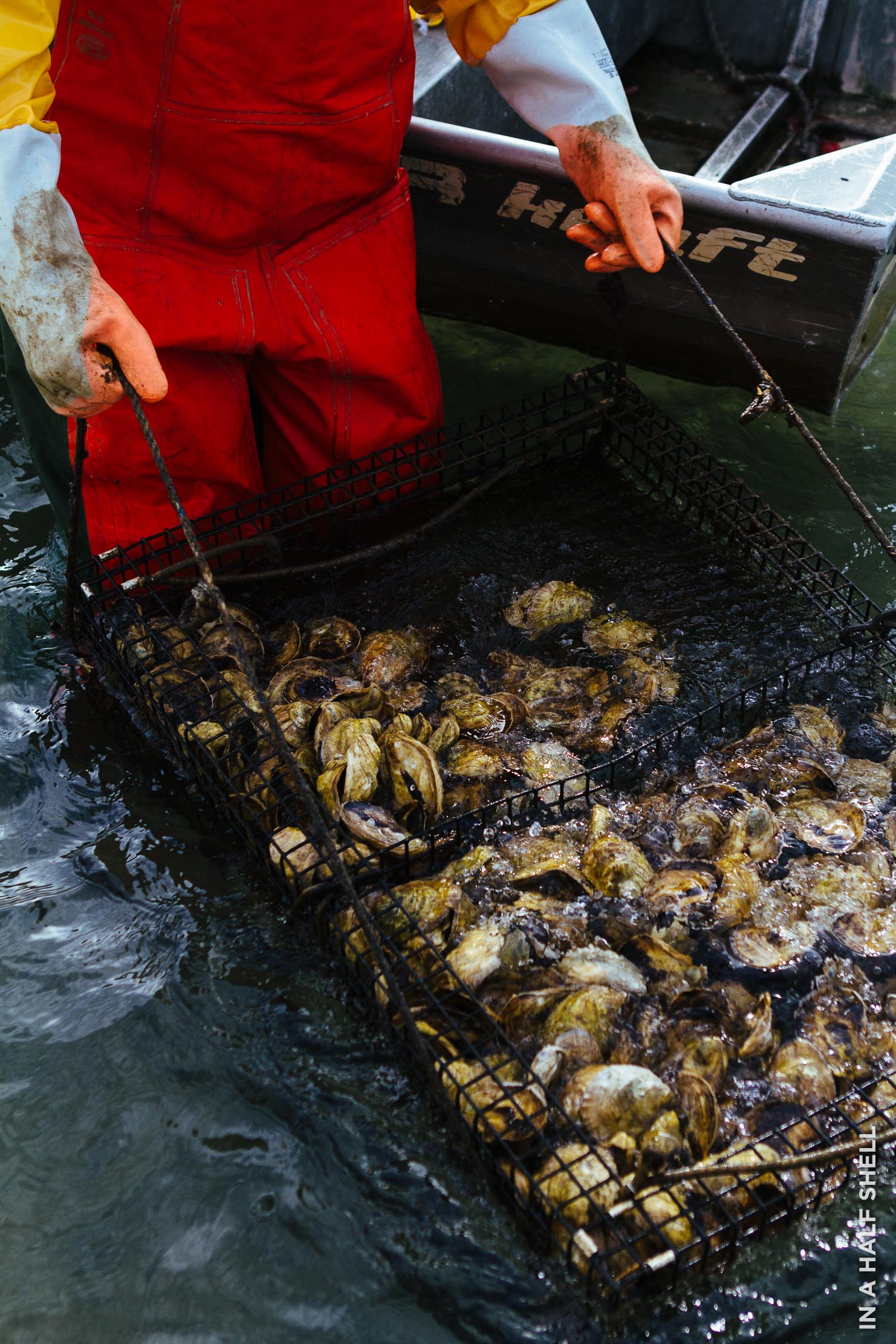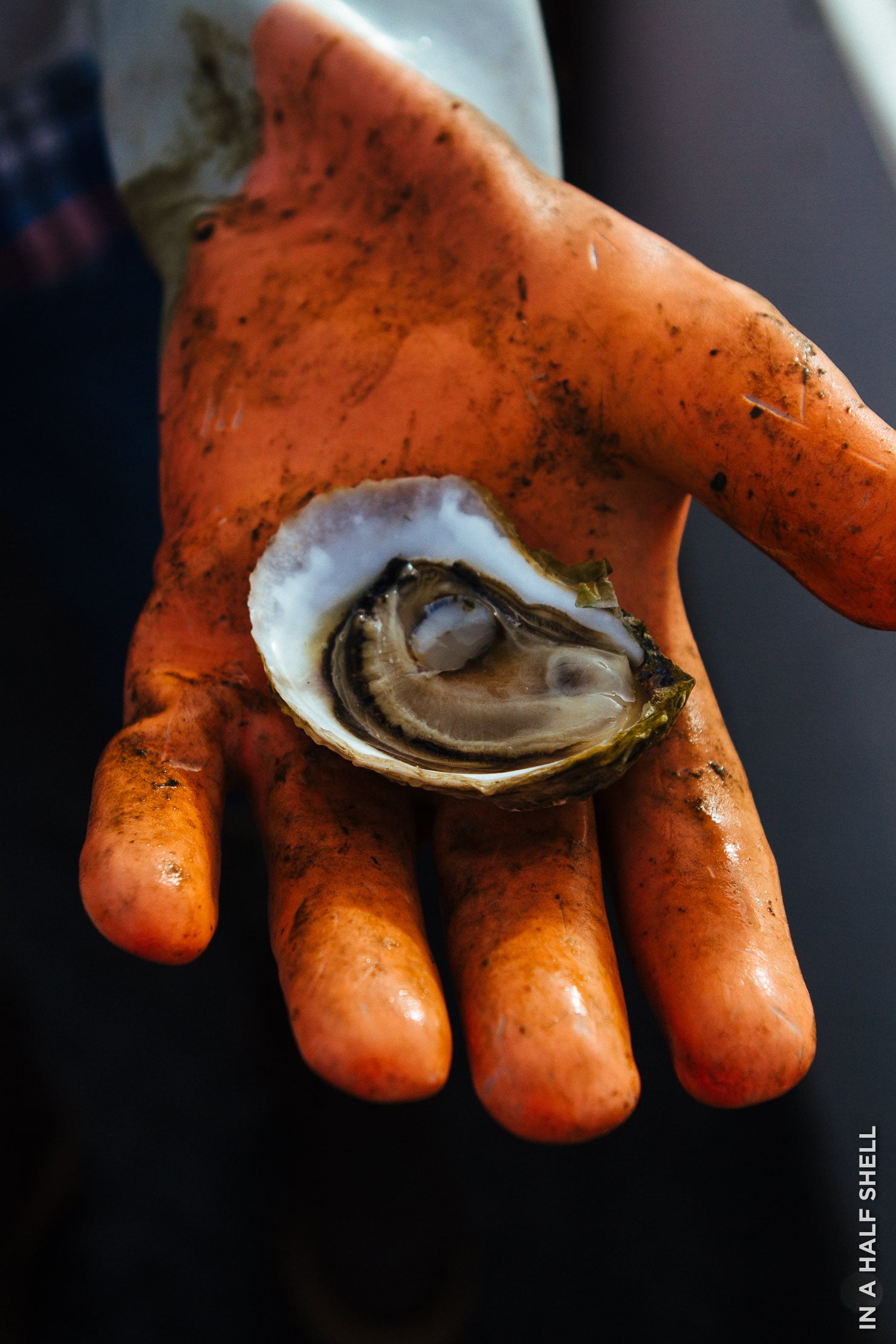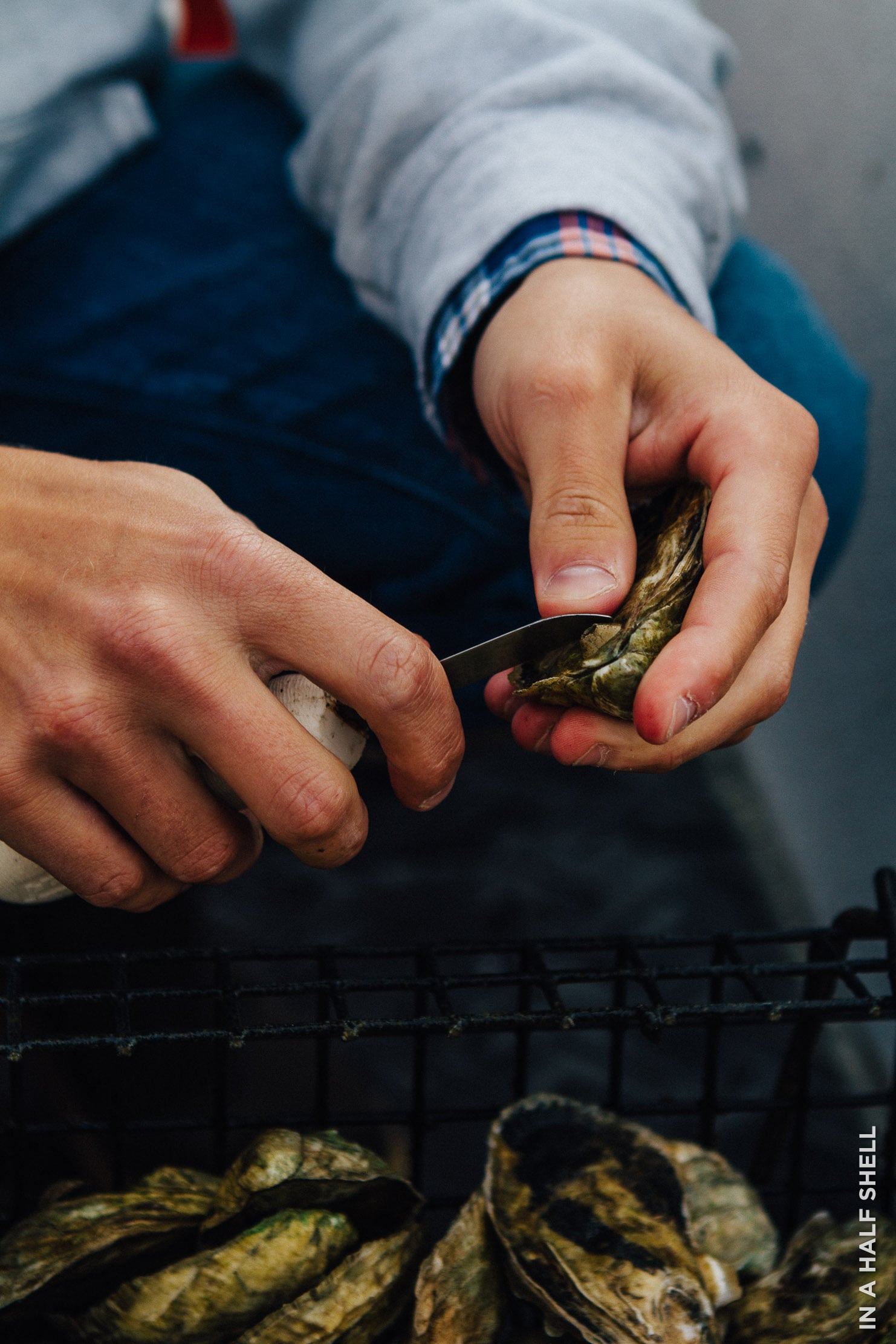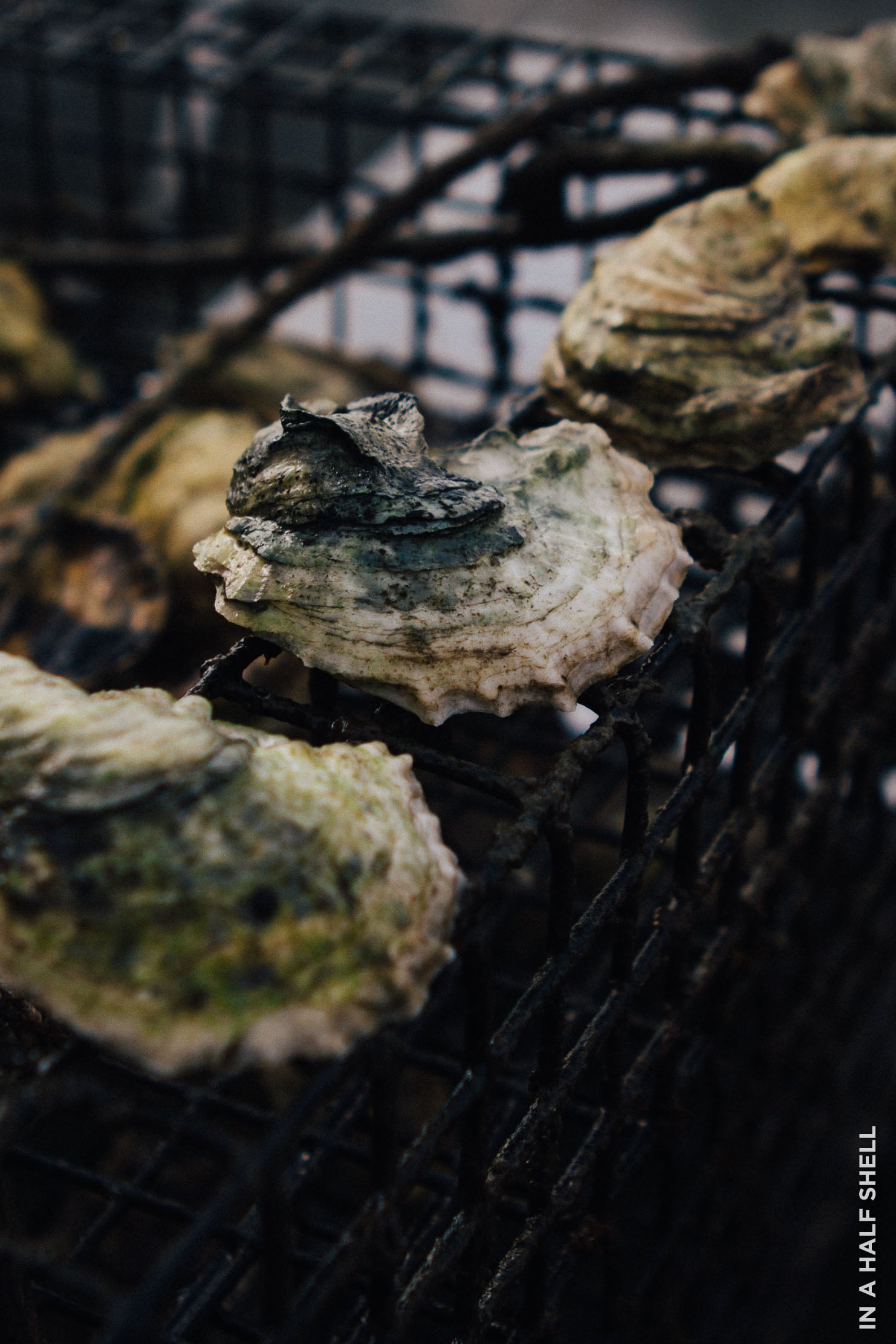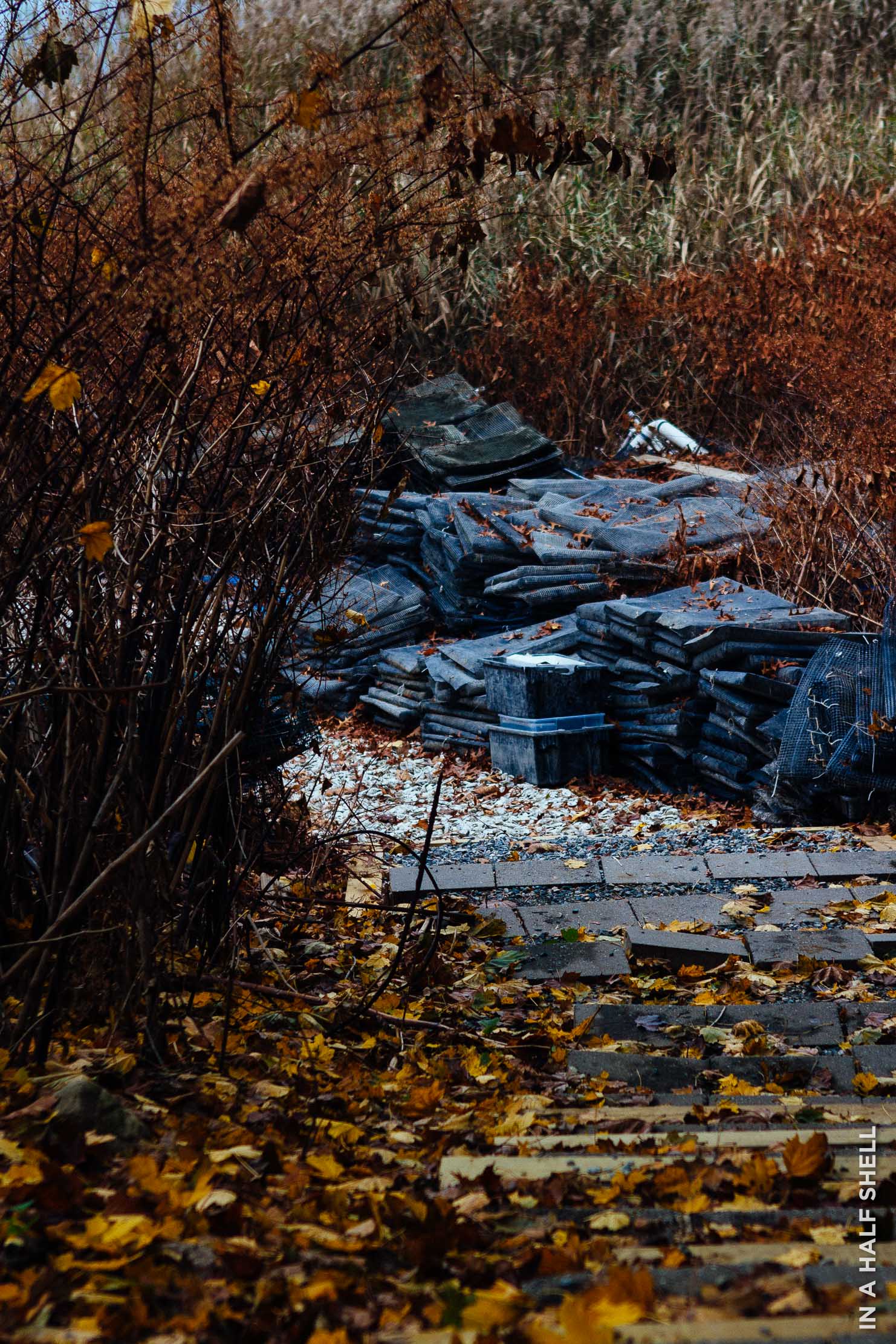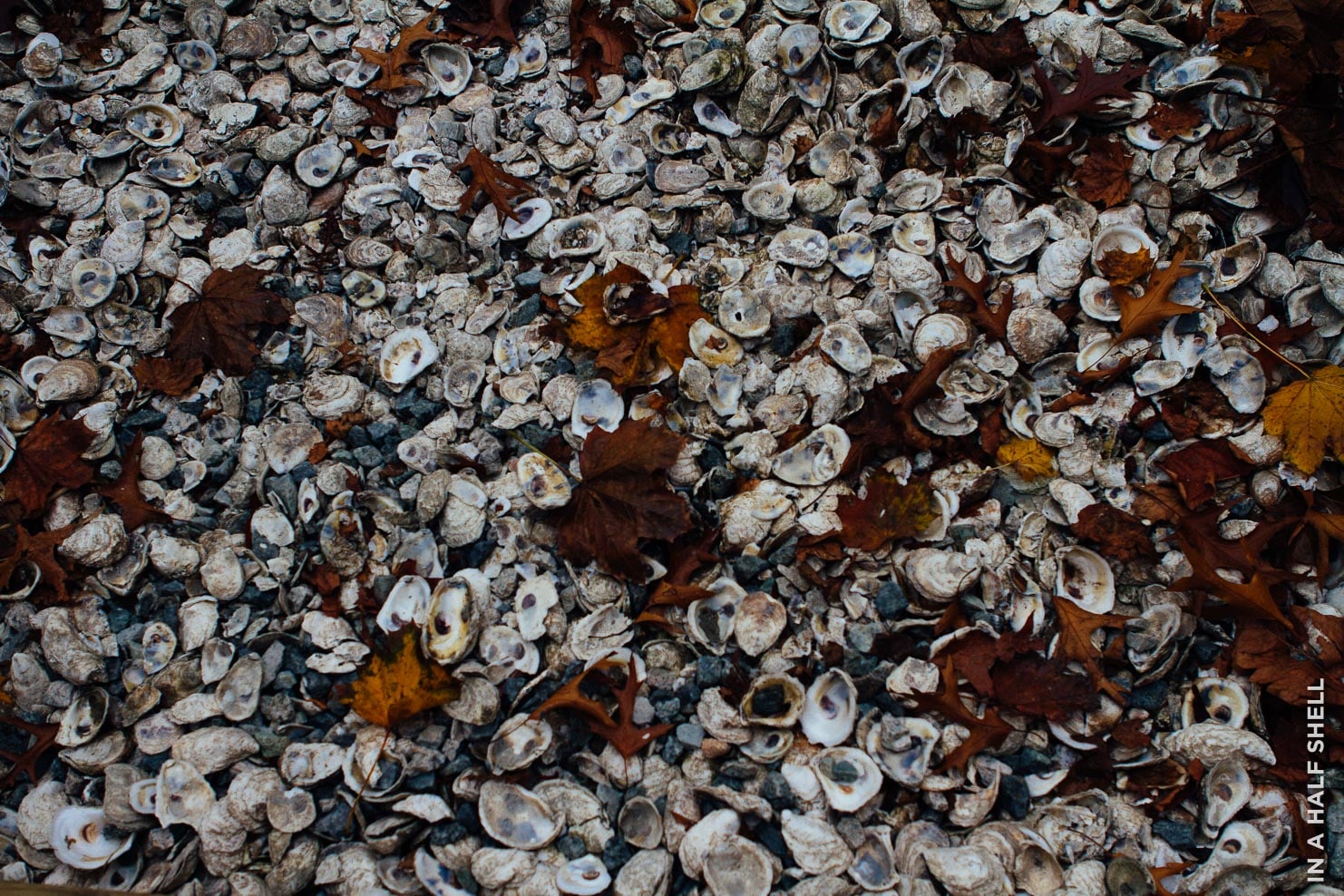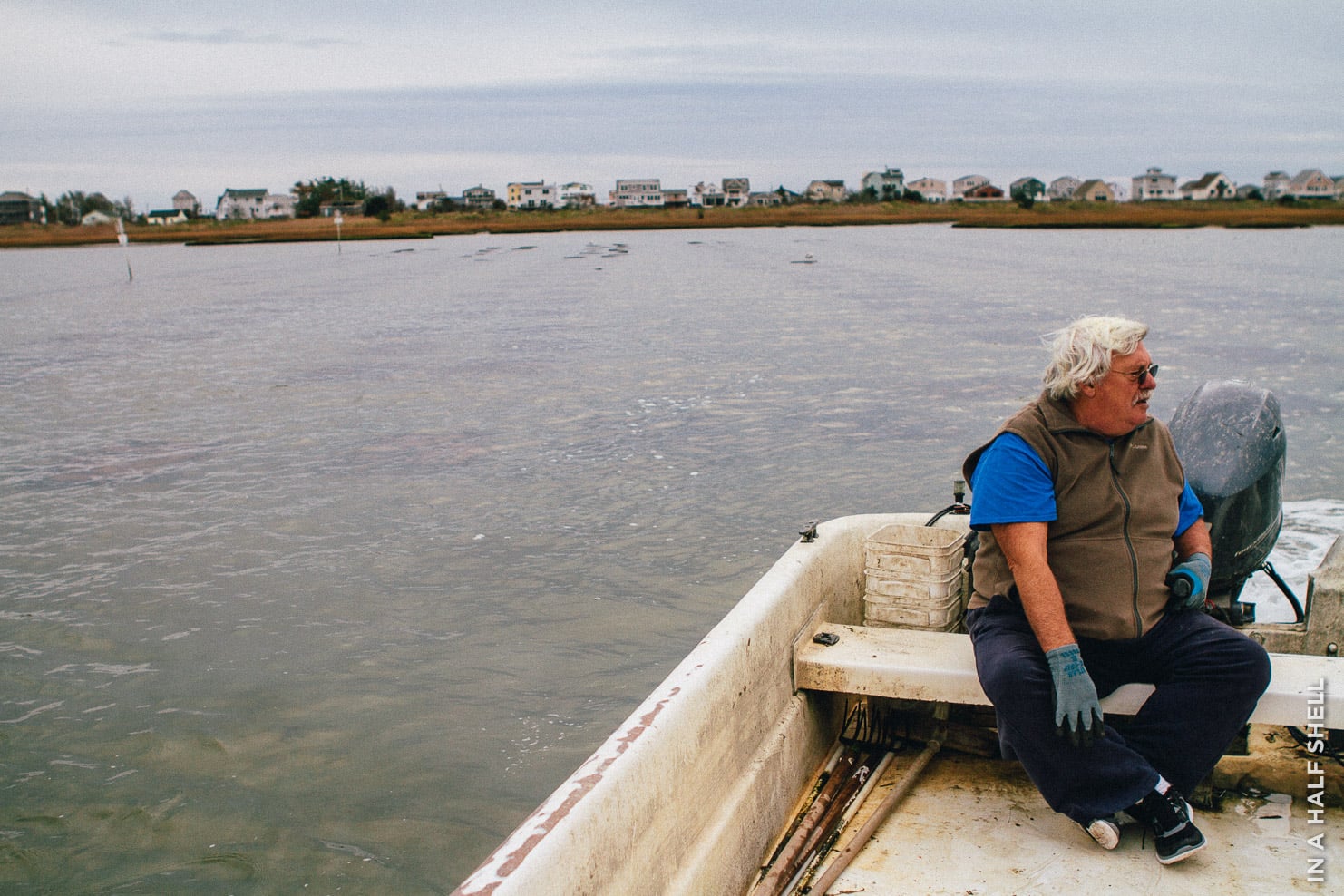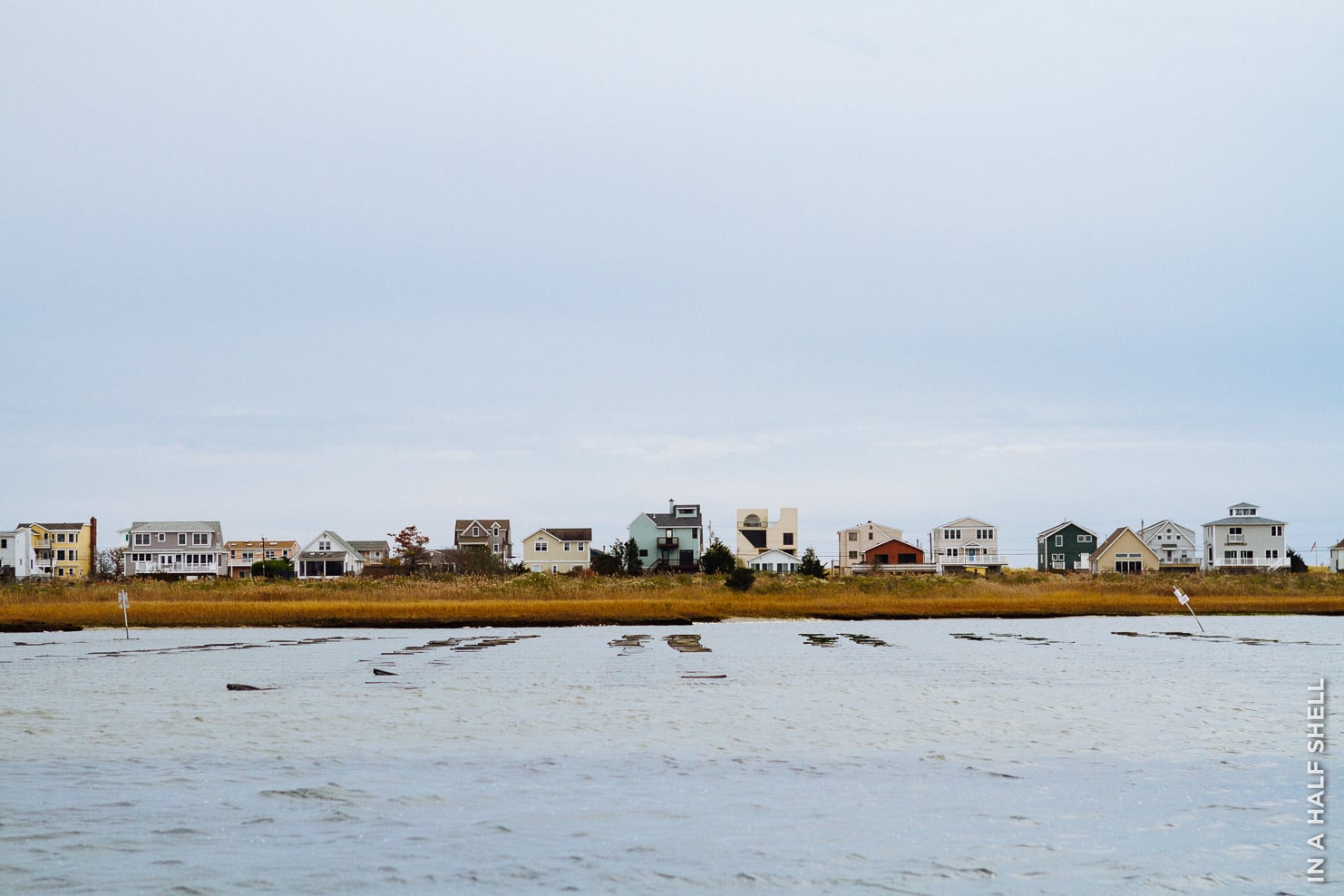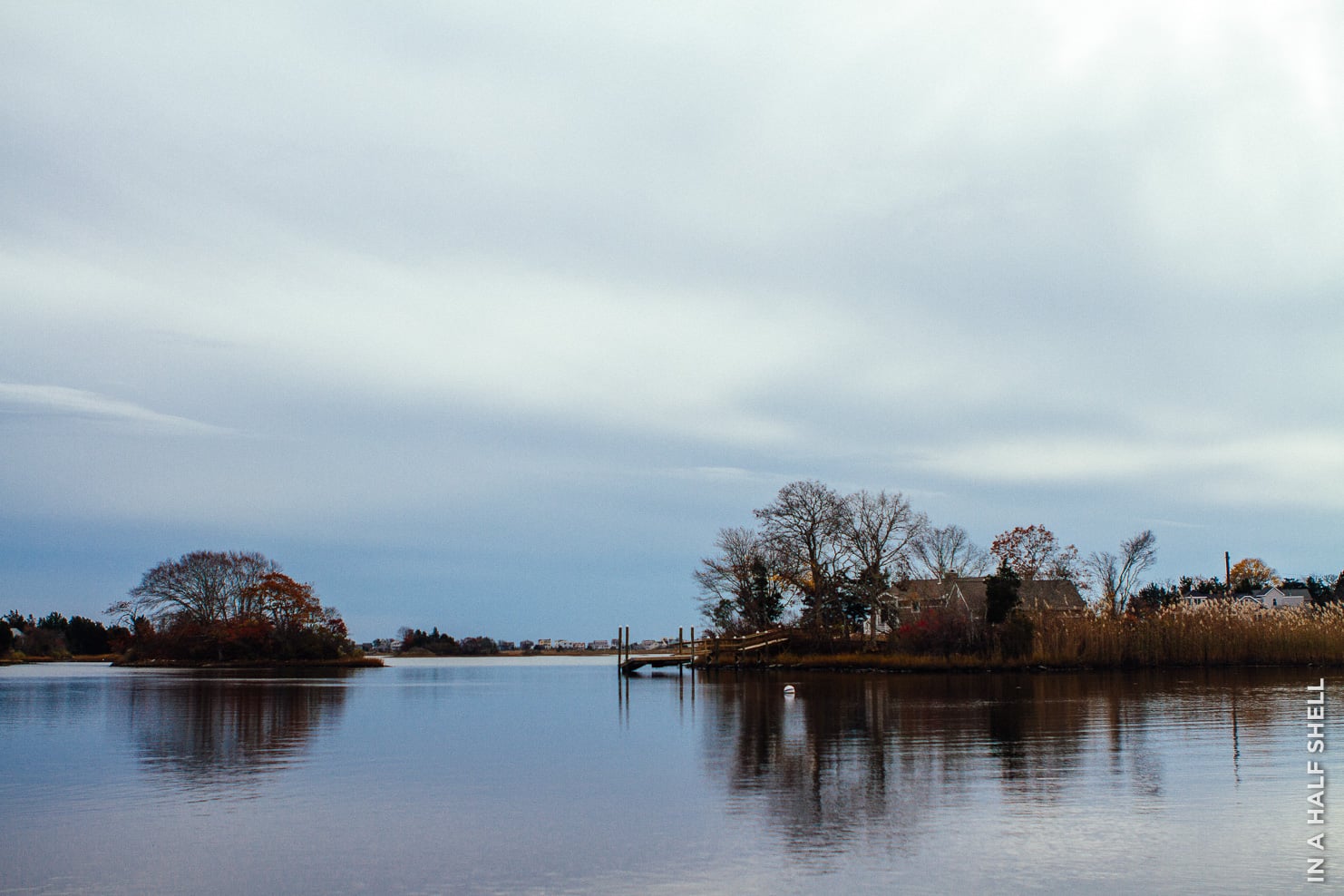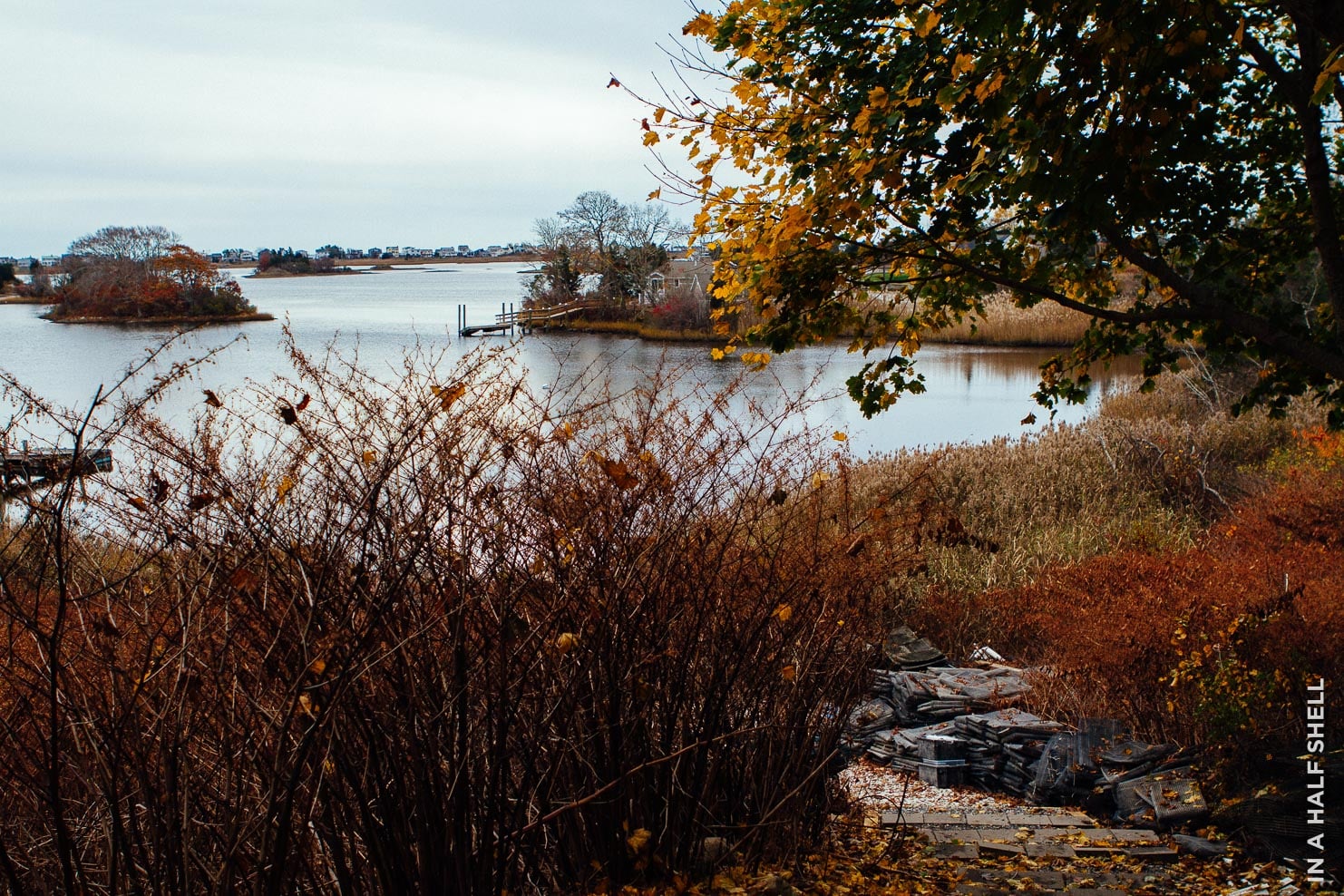Salt Pond Hopping: Rhode Island Oyster Farm Tour
At only 40 miles long and 30 miles wide, Rhode Island may be the smallest state in the US, but its oysters represent some of the finest in the business.
For years, I've endeavored to visit an oyster farm in every coastal Northeastern state, and have saved Rhody as the last (but certainly not least) destination.
My First Rhode Island Oyster Memory
I remember my first Rhode Island oyster well. The occasion: Christmas Eve of 2009 at Grand Central Oyster Bar with my then bf, now husband. It was a Moonstone, one of the five Rhody oysters that Rowan Jacobsen highlights in his original oyster bible, A Geography of Oysters. I had the book with me and recall reading aloud his description, tasting the oyster, and then deciding to record my own account.
Moonstone (Rhode Island): As I consumed my first Moonstone, I experienced an elaborate flavor story. First, the saltiness hit. Then it turned subtly sweet and full of mineral flavors. It finished with a crisp cucumber aftertaste. In the book, Jacobsen beautifully describes the lush environment in which the Moonstones may have derived their full flavors from, and also ends with a fun fact about the origin of the name. Has anyone heard of Moonstone Beach, a famous nude beach in RI?
Rhode Island Oyster Farming Culture
By appearances alone, you might think that oyster farming is relatively new to Rhode Island. But you'd be dead wrong. Oyster cultivation in Rhode Island dates back for centuries! Their native oyster beds shared a similar fate to those of New York. Fortunately, the Ocean State's passion for oyster aquaculture and appreciation is thriving once again, realizing itself across academic study and industry cooperation to oyster festivals and oyster-centric tourism. There's even a Rhody oyster CSA from Walrus & Carpenter Oysters that delivers to NYC (read my post about that buying/pick up experience).
Touring Rhode Island Oyster Farms
In the fall of 2015, I was invited to host an oyster tasting dinner for a landmark hotel in Newport, Rhode Island. True to my nerdy nature, I wanted to source all of the oysters fresh from local farms and earn the privilege to speak knowledgeably about each operation. Selecting the perfect oyster examples wasn't easy though. Roughly 14% of Rhody's total land area is made up of large bays and inlets, and I only had enough time to explore three farming locations. I'd like to return one day (hopefully someday soon?) to conduct a follow-up assessment. It would be nice to explore the distinctive Narragansett Bay.
In the meantime, here's a behind-the-scenes look at three iconic Rhode Island oysters and their growers: Matunuck Oysters with Perry Raso, Quonnie Rocks with Jim Arnoux, and Watch Hills with Jeff Gardner.
Matunuck Oyster Bar and Farm
Serious oyster lovers should not pass through Rhode Island without stopping by Matunuck Oyster Bar. This charming "pond to plate" seafood haven is located in South Kingston, perched next to the Matunuck Oyster Farm on Potter Pond. Btw: Matunuck Oyster Farm is one of the few farms in Rhode Island that offers public tours. (401 Oyster Company is another.)
Perry Raso is the owner and operator of Matunuck Oyster Farm, Matunuck Oyster Bar, and Matunuck Organic Vegetable Farm (oh my!). Since childhood, Perry recognized untapped opportunities in the water. Whether its clam digging, eel trapping, or diving for steamers, Perry developed expertise in harvesting wild shellfish. Yet after spending a lot of time doing this, he realized that the bigger opportunity is actually in aquaculture—so he turned to oyster farming.
I took the train from Penn Station, NY to Kingston, but amateurishly overestimated Amtrak's ability to get me there on time. 25 minutes late, ugh. This was not how I imagined my first meeting with Perry to go (my track record with trains is officially awful). Nevertheless, Perry was patiently waiting at the station for me with his monster-sized pickup truck. On the way to his restaurant, we talked about his journey from digging for littleneck clams as a kid to studying aquaculture & fisheries technology at the University of Rhode Island, to opening an oyster bar without any restaurant know-how. Although the details of his story have faded in my memory, it is undeniably clear that Perry is an incredibly focused and productive individual. He gets stuff done.
Matunuck Oyster Farm began as a one-acre operation in 2002 and has since grown to seven acres. To get a closer look, we boarded a small workboat and quietly drifted into the mid-morning mist across Potter Pond. Once we approached the floating lines of bags, Perry hopped into the water and towed the boat himself. We examined a few bags of juvenile oysters no larger than poker chips. Future Matunuck oysters! They will require at least another growing season or two but were well on their way.
For the oysters that are ready to harvest, a good number of them are sold at the raw bar several hundred meters away. You really can't get any more local than that!
Quonnie Rocks of Quonochontaug Pond
Think fast: how do you pronounce Quonochontaug? (I believe it's "KWON-uh-kuh-tawg.") Quonochontaug is a small beach community nestled between Ninigret Pond and Quonochontaug Pond, and their respective barrier beaches. Quonochontaug Pond is the deepest and most saline of southern Rhode Island's salt ponds, and this is where Quonnie Rock Oysters, the first commercially grown and harvested oyster in that pond, are matured.
Haven't heard of Quonnie Rocks? You may know Jim's other oyster brand, the East Beach Blonde from neighboring Ninigret Pond. Although the two ponds are physically close to each other, they are quite different from oyster growing environments. As Jim puts it, Quonochontaug exchanges a lot of its water during every tide, while Ninigret does not. This results in Quonnie Rocks being exposed to more consistent ocean-like conditions, while Ninigret goes through phases.
As a teenager, Jim used to earn money clamming in the Great South Bay, a longstanding family tradition that he would continue into his collegiate years at the University of Rhode Island. Today, like Perry, Jim is fully committed to oyster farming and supporting Rhode Island aquaculture in his role as president of the Ocean State Aquaculture Association. (Not to mention that he's already showing his young daughter the ropes!) The organization recently relaunched the Rhode Island Oyster Trail (RIOT) website and is a beneficiary of this weekend's Newport Oyster Festival.
When we (myself plus oyster buddies Paul & Matt Hagan) met up with Jim in 2015, his lease in Quonochontaug was still relatively new and experimental. Since then, he has added a few more acres to his lease and aims to produce more bottom-cultured Quonnies. To get a closer look, Jim towed the three of us—plus his super cute daughter—out to the nursery and grow-out site. Is hand towing a thing here? He pulled up a market-ready tray containing some very handsome green-tinged Quonnie Rocks. We shucked a bunch and each one was a knock out 10 out of 10.
Frankly, I had never seen such big, beautiful, and meaty oysters from Rhode Island before. (It also didn't hurt that we had a pro shucker on deck.) In NYC, the Rhody's that I usually encounter at the raw bars are typically petite, and frankly, a little wimpy. Perhaps Ocean State oyster lovers are just keeping the good stuff for themselves. I wouldn't blame them.
Watch Hill Oyster Farm
"What do oysters and bears have in common?" Jeff Gardner, grower of Watch Hill Oysters quizzed the three of us as we pushed off from his dock. I knew where he was going with this, but before I could get to the punchline, Jeff schooled us on the shared metabolic behavior of these two creatures.
For over 25 years, Jeff and his family have been growing Watch Hill Oysters in Winnaupaug Pond in Westerly, RI—another one of Rhode Island's famous salt ponds. A stroll down the shell-laden driveway will paint a vivid picture of the investment that Jeff has made. A good swath of his gear is custom-made (read: DIY), as the farming gear wasn't quite as abundant—nor affordable—back then as it is now.
We approached the Watch Hill lease at low tide. A dozen rows of tidy oyster trays slowly revealed themselves to us in the distance and I admired how perfect they looked against the colorful assortment of beachfront homes. The hum of ocean waves rumbled just beyond, about 100 yards away. As I peered down, I could clearly see the green and brown speckled pond bottom. We were floating by in no more than a couple feet of water and the chances of getting stuck were fairly high. Fortunately (for me), Paul and Matt were there to assist as Jeff's unofficial boat crew that afternoon.
The market size oysters that we sampled right out of the water had a mollusky sweet and earthy taste, the same kind that you find in a good clam. We slurped silently and listened intently as Jeff told us stories of his past life as a record store owner, and his transition into the world of aquaculture. I could've stayed on the water for the rest of the afternoon, but the winds were starting to pick up and we were not prepared to get caught in the rain. Although we opted to take shelter that day, the Watch Hill farming crew would not get such opportunities. Rain or shine, sleet or snow, they are working the farm and harvesting year-round.




